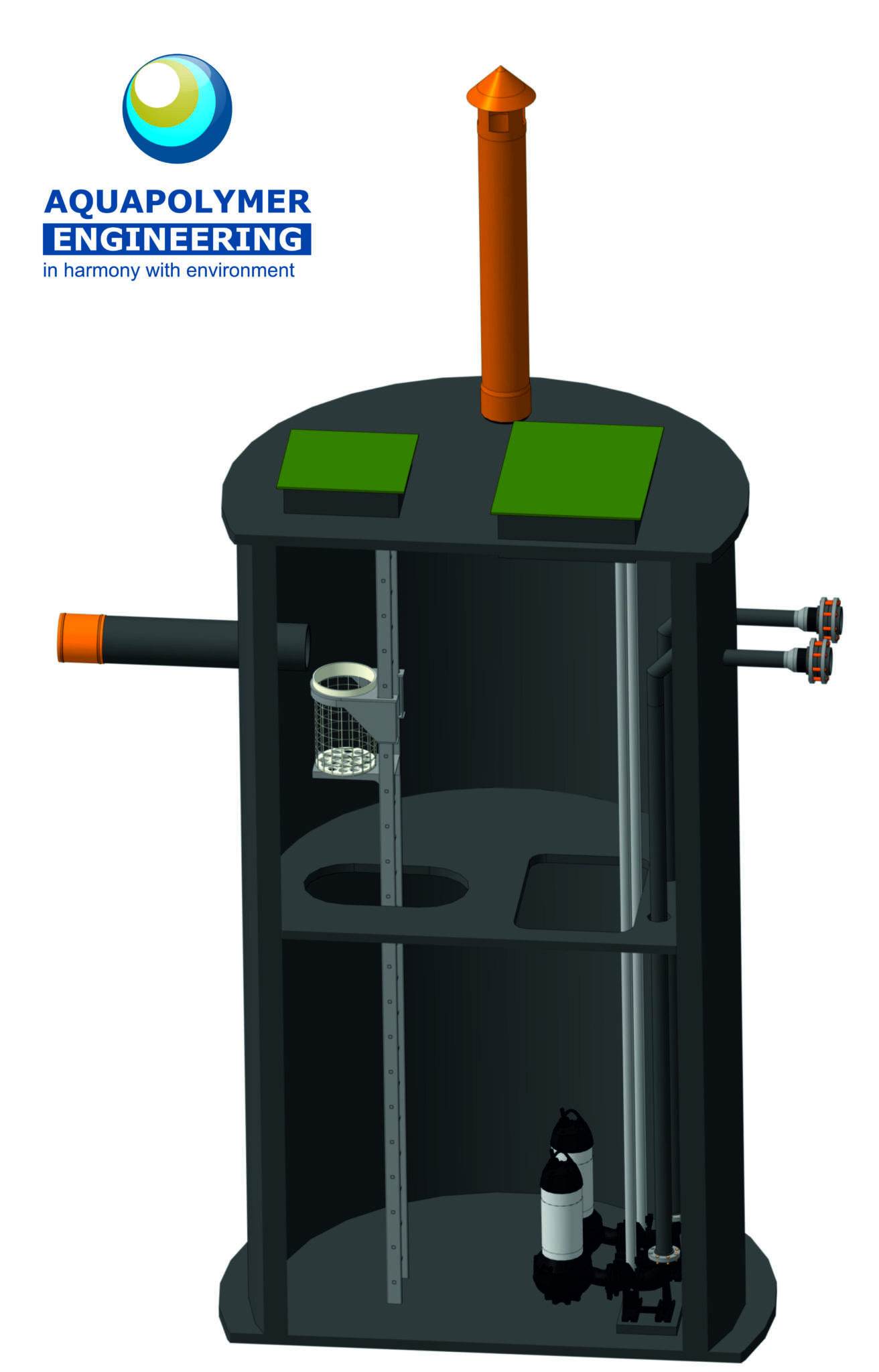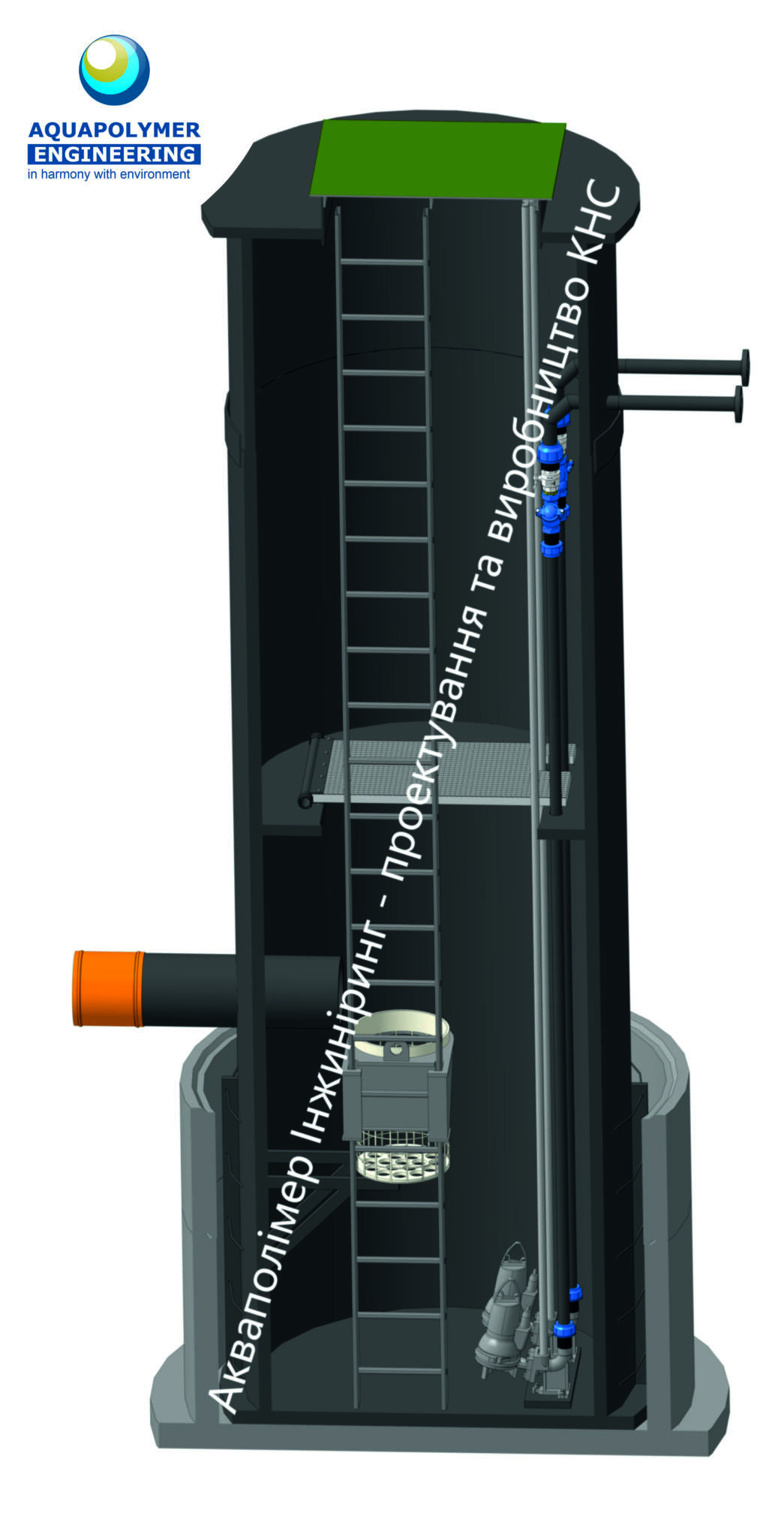Sewage pumping station SPS – a hydraulic structure, which is a polyethylene tank, inside which the sewage pumps, inlet and pressure pipeline, guides, float sensors, gate valve and basket are mounted. The latter serves as a filter, which retains rubbish.
Sewage pumping unit is used for lifting to a height and subsequent pumping of stormwater and industrial wastewater. The sewage pumping unit is connected to municipal engineering systems, wastewater treatment plant and other networks of domestic, storm and industrial-technological sewerage. Installation of SPS is necessary when there is no possibility of spontaneous transportation of sewage by gravity to the place of collection and it is necessary to raise drains on height from the point located below a geodetic mark of a sewer.
How to choose a suitable sewage pumping station
How to choose a sewage pumping station? Here you need to consider a number of criteria, in particular:
- composition of polluted waters;
- depth of installation of a sewer collector;
- height of lifting of liquid and distance of its transportation;
- volumes of wastewater formation;
- features of the area;
- method of equipment control and type of sewage pumps.
The height of the station is selected taking into account the depth of wastewater. Usually this parameter is from 3 to 8 meters. The thickness of the plastic case is up to 150 mm. For convenience of periodic service SPS are equipped with a ladder, a platform and the tight hatch on the top. To fully automate the operation of the sewage pumping station, the system is equipped with an automatic control cabinet with installed software that allows you to control and regulate the operation of the equipment.
Sewage supply to the SPS is carried out forcibly or by gravity. When the liquid is filled to a certain level, float sensors are triggered, which, in turn, start the submersible sewage pumps, which push the contaminated water through the pipeline.
How to properly design SPS and design documentation for SPS
For the correct design of sewage pumping stations it is necessary to consider everything, down to small nuances:
- type of submersible pumps and their number (working and reserve);
- station diameter case wall thickness (up to 150 mm);
- type of sewage (domestic, storm, industrial);
- maximum volume of wastewater formation;
- design pressure at the exit of the station;
- height difference between the beginning and end of the pressure pipeline, quantity, material, depth, direction and length of pipes;
- supply pipe material, quantity, direction, depth, diameter and wall thickness of supply pipes;
- the type of connection of the supply pipeline (flange, bell, etc.);
- the presence of a basket or bumper for large garbage;
- direction of cable entry into the SPS;
- the need for thermal insulation;
- distance from the SPS to the control cabinet and a number of other additional criteria.
Aquapolymer Engineering
Aquapolymer Engineering company, which is a leader in the field of design of sewage pumping stations, offers production and installation of sewage pumping stations in Ukraine.
Here you can buy a sewage pumping station for domestic and industrial needs on favorable terms. Our engineers will design the SPS for specific tasks, and the installation service will install the SPS at the customer’s facility in the shortest possible time.



